Comparative Analysis of Electrodes used in Neuromuscular Electrical Stimulation Therapy for the Treatment of Dysphagia
PART 2
Testing and analysis performed by
Weddendorf Design, Inc.
8103 Valley View Drive- Huntsville AL35802
Date of Publication: September 27, 2009
Weddendorf Design, Inc. Electrode Compatibility
Purpose:
This document is a follow on to the Comparative Analysis of Electrodes published March 27, 2009. It has been created to demonstrate a comparison of performance between the eSWALLOW USA electrodes, and the new AlternativeElectrodes brand electrodes.
The intent of our testing and analysis is to provide an honest and fair comparison of the strengths and weaknesses of each brand of electrodes based on the two key measurements of performance important to the treatment of dysphagia; dispersion and impedance.
A further test was performed to determine the effect of re-using the eSwallow electrodes up to three times.
Impedance:
Because impedance is the most often used method of measuring the performance of electrodes we began our comparison by testing the impedance or resistance of of the two brands of electrodes.
10 electrodes from each manufacturer were randomly selected for testing. 10 trials were conducted in which the resistance of each electrode was measured. All measurements were taken using a standard Ohmmeter. The results of the tests are depicted in the table below. The unit of measure is Ohms.
Electrode tested. Average Impedence, Ohms
eSWALLOW USA. 10.6
AlternativeElectrodes. 60.5
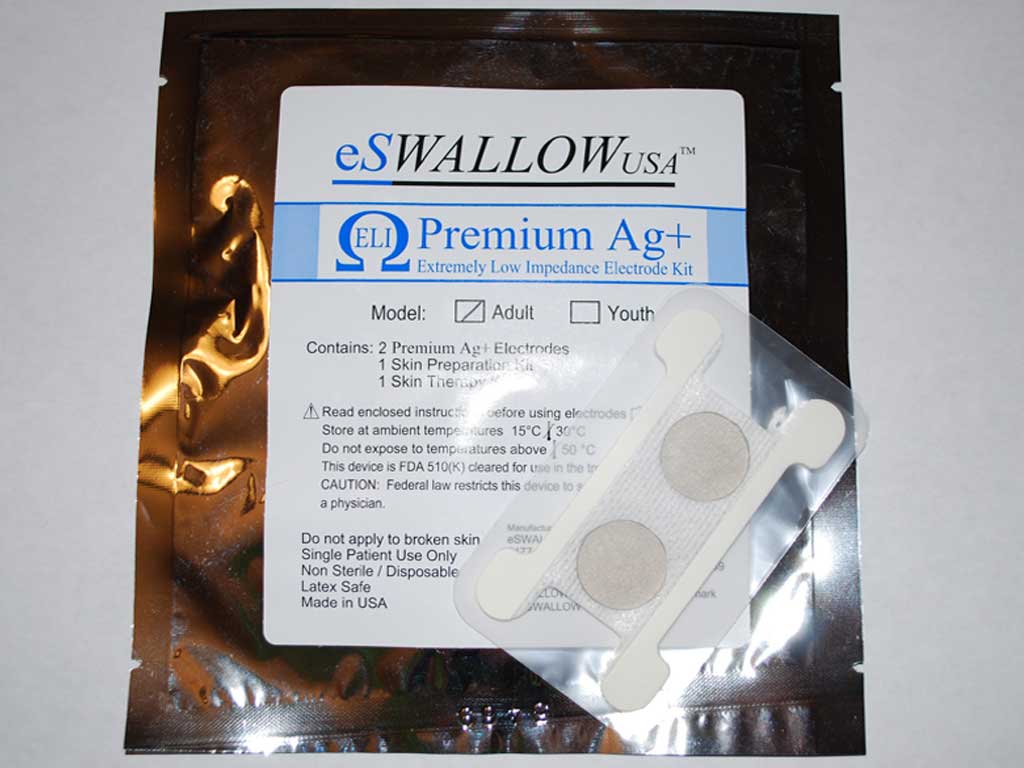
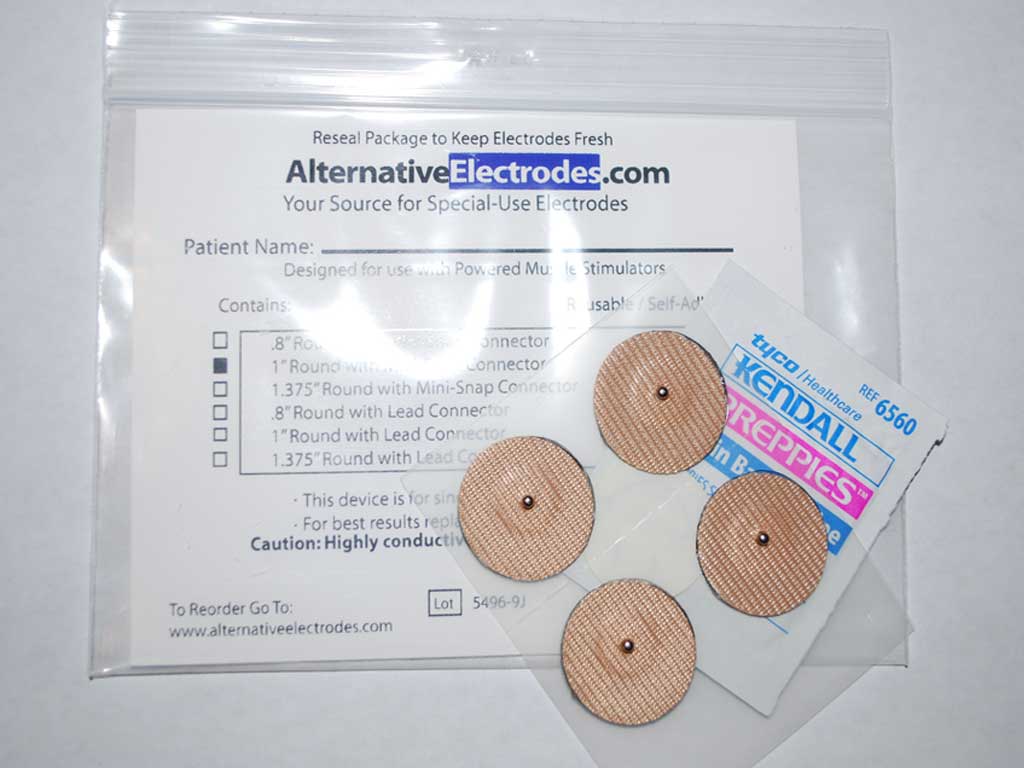
Dispersion:
Each manufacturer’s electrodes were tested to see how evenly electrical current is dispersed across the surface of the electrode. The test was conducted with the aid of a conductive, illuminating thermal membrane. As current passes from the electrode to the membrane, a small amount of heat is produced. The areas of higher current produce more heat. A visual inspection of the membrane reveals the areas of greater current flow. Blue indicates greater current flow, yellow and red indicate lesser current flow.

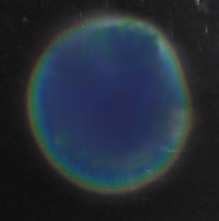
ESWALLOW USA

Alternative electrode
Re-Use:
Electrodes from eSwallow were tested to see if reusing them adversely affects their impedance or dispersion. The test was done by testing the impedance of the 10 electrodes used in the above test again after preparing an area of skin, placing the electrode and removing it 3 times before returning it to the impedance meter.
The results of the tests are depicted in the table below. The unit of measure is Ohms.
Electrode tested. Average Impedence, Ohms
eSWALLOW USA. 10.9
Conclusions:
- The eSwallow electrodes demonstrate much lower impedance than the AlternativeElectrodes electrodes.
- The eSwallow electrodes are especially suitable for re-use, with little or no effect on their much lower impedance.
Summary Statement:
The eSwallow electrodes are a superior product based on impedance. They showed an average impedance of about 1/6 that of the Alternative Electrodes. Lower electrode impedance will enhance the performance of any stimulation unit, prolong battery life and provide most effective muscle stimulation.
Copyright 2009, Weddendorf Design, Inc. All rights reserved.
NMES Training Online

eSWALLOW is revolutionizing Neuromuscular Electrical Stimulation (NMES) therapy for the treatment of dysphagia. Now, that same revolution is taking place in the area of NMES training for the treatment of dysphagia.
Dysphagia
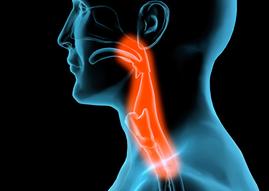
Dysphagia is a medical condition in which an individual experiences difficulty in swallowing. This condition is often the result of a stroke or radiation therapy. It is also common in Parkinson’s, Multiple Sclerosis, and Cerebral Palsy patients.
NMES
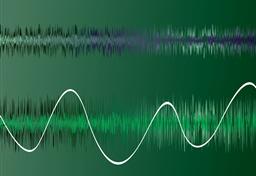
Electrical stimulation therapy has proven to be the most effective treatment for dysphagia. Electrical current is used to stimulate key muscles while the patient practices swallowing. The result is greatly improved swallowing function through muscle re-education.

